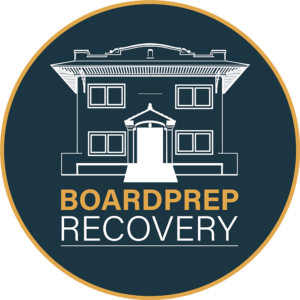The amount of media attention that has been devoted to the pandemic may obscure the longevity and potential danger of another national problem: the opioid epidemic. Indeed, addiction to opioid drugs—including fentanyl, an extremely potent opioid—has continued to rise in recent years. Unfortunately, fentanyl addiction is far too common, and this addiction can be deadly.
If you’re struggling with fentanyl addiction, know that help is available. However, detoxing from fentanyl at home is not recommended. In fact, medical supervision and follow-up care are essential for safe and successful detox. To learn more about medical detox in Tampa, FL for fentanyl withdrawal symptoms, please contact BoardPrep Recovery Center® at 866.796.4720 today.
What Is Fentanyl?
Being a powerful, synthetic opioid drug, fentanyl is a Schedule II substance (according to the National Institute on Drug Abuse), which can be safely prescribed by a medical doctor to address severe pain.[3] But because it is 50 times stronger than heroin, many do not realize how dangerous this type of drug is, especially in terms of how addictive it can be.
Anyone who takes fentanyl regularly can become dependent on the drug. And if the drug suddenly becomes unavailable, the person may experience severe withdrawal symptoms, because the brain and body can no longer cope without the drug.
How Common Is Fentanyl Abuse?
According to the latest figures reported by the National Center for Drug Abuse Statistics, over a hundred people die every day as a result of the opioid epidemic. The number of opioid-related fatalities is growing. If you’re currently encountering an opioid dependency, specifically here, on fentanyl, there are a number of important considerations worthy of your attention.
Detoxing from fentanyl is the necessary treatment for fentanyl dependence, and those who require detox are strongly urged to seek professional medical care to assist and monitor the process. Attempting to detox from fentanyl at home, without a medical specialist’s supervision, is dangerous and can lead to a seizure or coma. This is why seeking professional treatment at a local detox center or drug rehab facility is so crucial to a safe recovery.
Symptoms of Fentanyl Withdrawal
Medically-assisted fentanyl detox allows patients to slowly be weaned off the drug or to be treated with and/or stabilized by medications during withdrawal. However, those who are grappling with fentanyl addiction will require rehab after a detox program, since detox alone is only one part of addiction treatment.
There are many different symptoms associated with a fentanyl withdrawal syndrome. This syndrome is extremely intense and can be very uncomfortable, painful, even dangerous. Because fentanyl is such a potent opioid, many people relapse back to abusing the drug just to make these symptoms stop. These symptoms can include:
- Runny nose, watery eyes, and yawning
- Restlessness or anxiety
- Irritability or mood disturbances
- Increased pain
- Goosebumps on the skin, chills, or sweating
- Stomach cramps
- Nausea, vomiting, or diarrhea
During withdrawal from fentanyl, many people feel excruciating pain in their muscles, joints, and bones. In addition, some intense psychological symptoms may occur as well, such as extreme fear, depression, or agitation. Any of these symptoms can become severe at any moment. Medical supervision at a detox center or drug rehab facility can make the experience of withdrawal from fentanyl much more manageable and less potentially dangerous.
Benefits of Medically Assisted Treatment
Detox patients can receive medications to help stabilize them, so they will not experience the severity of the withdrawal symptoms. Methadone, buprenorphine, and Naltrexone are the most common opioid detox medications.
There is a range of benefits of finding medically-assisted treatment, such as:
- A supervised detox environment offers round-the-clock nursing care.
- The use of medications can lessen the intensity of withdrawal symptoms.
- You have peer support and addiction education.
- You’ll have access to therapy and counseling services.
- You will have aftercare planning and support.
- You’ll gain relapse prevention skills.
When you are ready to seek help for your fentanyl addiction, it is important to find a detox center or drug rehab facility that offers medically-assisted detox. This will ensure you have the safest and most comfortable detox experience possible, and it will also provide you with access to ongoing addiction treatment services so you can achieve long-term sobriety. However, it should be noted, the stabilization process may take up to a few weeks.
What Should You Do Before Entering Fentanyl Detox?
Before entering detox for fentanyl, you should ask questions to help you prepare and learn about the detox process. Some of the questions you may ask before your first detox appointment are:
- What should I bring?
- How long will detox last?
- What withdrawal symptoms should I expect?
- How you will minimize withdrawal symptoms?
- What, if any, medications will I need to take?
- Do you provide 24-hour monitoring of patients?
- Do you provide counseling during the detox process?
Seek Treatment at BoardPrep Recovery Center®
The team at BoardPrep Recovery Center® believes that hope is the foundation of recovery. Optimism, focusing on why you wanted to get help for your addiction, and doing all you can to stay positive about your detox and follow-up therapy are all important factors in determining whether or not you succeed.
At BoardPrep Recovery Center®, we provide the best possible care for our clients. We offer a range of treatments for fentanyl addiction, including:
- Cognitive-behavioral therapy
- Dialectical behavior therapy
- Holistic therapy
- Group therapy
- Family therapy
Don’t wait another day to find treatment for your fentanyl addiction. Call BoardPrep Recovery Center® today at 866.796.4720 to learn more about our treatment programs.







